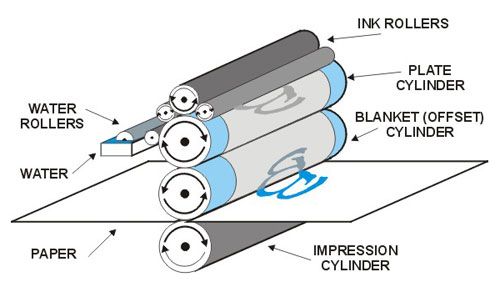Personalized Designs Enhanced Through litho printing
Personalized Designs Enhanced Through litho printing
Blog Article
A Comprehensive Guide to Understanding Litho Printing Techniques
The globe of litho printing, a technique stemming from the late 18th century, is an interesting blend of history, science, art and development. This detailed guide will certainly untangle the complexities of this printing method, from the make-up of litho inks to the challenges encountered in modern applications. As we venture right into the intricacies of lithography, the relevance of automation and sustainability in ensuring its future significance comes to be significantly clear. Stick with us as we journey right into the exciting world of litho printing.
The Historic Advancement of Litho Printing
The historic trajectory of litho printing, a critical technology in the world of interaction, is an exciting story of human ingenuity. Birthed in the late 18th century by Alois Senefelder, this strategy was initially a cost-effective technique of publishing theatrical jobs. Lithography, derived from the Greek words for 'rock' and 'to create', made use of a smooth rock surface area to transfer images onto paper. The process developed with the development of the rotating press, which greatly increased productivity (litho printing). In the 20th century, the development of offset lithography transformed the industry, allowing for mass production of top notch prints. Each phase of litho printing's evolution showcases mankind's unrelenting quest of effectiveness and high quality in visual interaction.
Translating the Scientific Research Behind Litho Printing Inks
Moving on in the expedition of litho printing methods, the emphasis currently moves to the science behind litho printing inks. The composition of these inks, their drying out process, and shade mixing methods create the backbone of this complicated art form. Recognizing these aspects is essential to mastering the craft and achieving the preferred print outcomes.
Structure of Litho Inks
In lithographic printing, the fundamental function of litho inks can not be overstated. The structure of litho inks varies depending upon its function, yet typically, they contain 2 main components - pigments and cars. Pigments, the color-providing elements, are carefully ground bits put on hold in the car, a liquid that carries the pigment onto the printing surface area. The vehicle is a complex mix of oils, materials, and solvents, which affect the ink's drying out time, bond, and gloss. In addition, various additives are existing to boost particular buildings like flow, drying, and resistance to ecological results. Each element plays a vital part in the last print's top quality, making the specific formula of litho inks a complex scientific research.
Ink Drying Process
From the composition of litho inks, focus transforms to the remarkable process of ink drying out. Two key approaches are made use of in litho printing: oxidative drying out and absorption. Absorption, on the various other hand, entails the ink permeating right into the paper fibers, which is a quicker process but can lead to much less lively shades.
Shade Mixing Techniques
While the drying process plays an essential role in litho printing, the scientific research of shade mixing techniques holds equivalent significance. This is a complex process that involves the cautious blending of primaries: cyan, magenta, and yellow, in differing proportions to accomplish a vast range of tones. The enhancement of black ink, referred to as 'essential', aids in controling the intensity and deepness of the shades. The scientific research behind litho printing inks also takes into consideration the transparency of the ink, which influences exactly how shades overlay and mix. To achieve an effective shade mix, print professionals need to additionally comprehend the intricacies of ink habits, shade theory, and the physical residential properties of the substrate on which the ink is applied.
The Art and Layout Aspects in Litho Printing
Litho printing takes a breath life into art and design through its distinct aspects. Litho printing accommodates a range of shades, allowing artists to create vibrant and lively prints. This combination of precision and adaptability makes litho printing a favored choice for lots of artists and designers.
Modern Applications of Litho Printing Strategies
Litho printing methods have actually found comprehensive use in the modern industrial sector. Its impact and significance remain to grow with the development of brand-new innovations and modern technologies in the field. This section will certainly explore web these modern applications and the transformative role they play in the printing market.
Commercial Litho Printing Utilizes
Litho printing remains a vital component of the industrial market. High-volume printing jobs, such as the manufacturing of publications, newspapers, and packaging, rely on litho printing for its capacity to supply remarkable picture quality and expense effectiveness. Litho printing additionally provides a broad color range, exceptional to that of electronic printing.
Advancements in Litho Printing
Pressing the boundaries of look at this now standard techniques, contemporary advancements have sustained a host of technologies in litho printing. One prominent advancement is electronic litho printing, which combines the merits of electronic technology with litho's high-grade output. These innovations emphasize the enduring significance of litho printing in the modern-day world.
Discovering the Refine of Litho Printing: Action by Action

Difficulties and Solutions in Contemporary Litho Printing

In spite of the accuracy and custom that litho printing proudly promotes, it is not without its set of modern obstacles. Digital litho printing enables for affordable brief runs and easy personalization, dealing with the concern of variable information. Thus, while there are obstacles, the litho printing industry is check my site proactively adapting to satisfy them head-on, ensuring its significance in the future.
Conclusion
In conclusion, litho printing, with its abundant history and clinical complexities, holds a significant location in the print industry. The future of litho printing hinges on its ability to adapt to these transforming demands, verifying its long-lasting worth in an advancing market.

Report this page